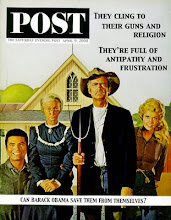During timed fire at seven yards, Old Faithful's trigger doesn't reset when you're cranking off a cylinder. After a reload, it fails to reset again. You failed to fire two of the twelve rounds in that stage. Later on, you drop another round because a primer failed to ignite. You can't imagine why--you followed the instructions some highly-experienced gunslinger in Slapout, Okla., gave you via the Internet. You even successfully test fired it with some Federal and Winchester factory ammunition.
You're not alone. Many of us have ignored the small print such as: "urges caution when using reduced power hammer or striker springs in firearms, particularly in firearms used for critical applications such as law enforcement. Reduction of the hammer or striker spring may compromise the reliability of the firearm" or "designed for competition and speed shooting ... For best results, use Federal primers."
If any revolver spring is labeled "reduced power", I'm leery of it. I don't put them in revolvers I might carry in dangerous times, which is any revolver I own. What works in ideal conditions may not work in the field. Springs need the strength to overcome fouling, temperature extremes, harder primers, faster-than-average cycling, and perhaps a bit too much headspace.
Here are some things anyone can try before putting reduced-power springs in concealed-carry or duty revolvers.
- Obtain quality references on how a revolver works such as Jerry Miculek videos from Clark Custom Guns or Jerry Kuhnhausen's shop manuals published by Heritage Gun Books.
- Carry out a detail strip, clean and lube job using above references.
- Check revolver function as laid out in the references. If a revolver is improperly fitted, it will negatively impact the trigger pull weights because it takes more force to rotate the cylinder. If that is the case, send it in for warranty repair or obtain the services of a reliable revolver smith.
- Strengthen your hands and fingers by squeezing a ball. Clear the revolver, leave all ammo in another room, and dry fire at a mark with a bullet-proof backstop behind it.
Lastly, try aftermarket standard-weight replacement springs such as Wolff/Brownells Type-1, standard power, Power Rib mainspring for S&W K, L and N frame revolvers. It has an altered contour that does seem to smooth out the action without reducing reliability.
If the mainspring comes in a kit with three, reduced-power rebound springs, throw them away. Even the heaviest rebound spring is three pounds below factory weight. Fortunately one can order the mainspring alone. Sometimes it helps to lightly polish the bottom and rear surfaces of the rebound slide of S&W revolvers. Emery paper fastened to a wood block works well. Do nothing to the hammer and trigger engagement surfaces.

J-frame S&W revolvers use a coil mainspring. I haven't had good luck with aftermarket mainsprings. These little pieces are even more apt to suffer trigger reset problems from reduced-power rebound springs in my large hands.
Check the springs in used firearms you've picked up in a trade. I've seen several used Colt D-frame snubs such as the Detective Special or Cobra that won't reliably pop primers because of bent or reduced-power hammer springs.
Compare coil springs in length to new, factory springs. If the old springs are shorter, replace them.

No comments:
Post a Comment